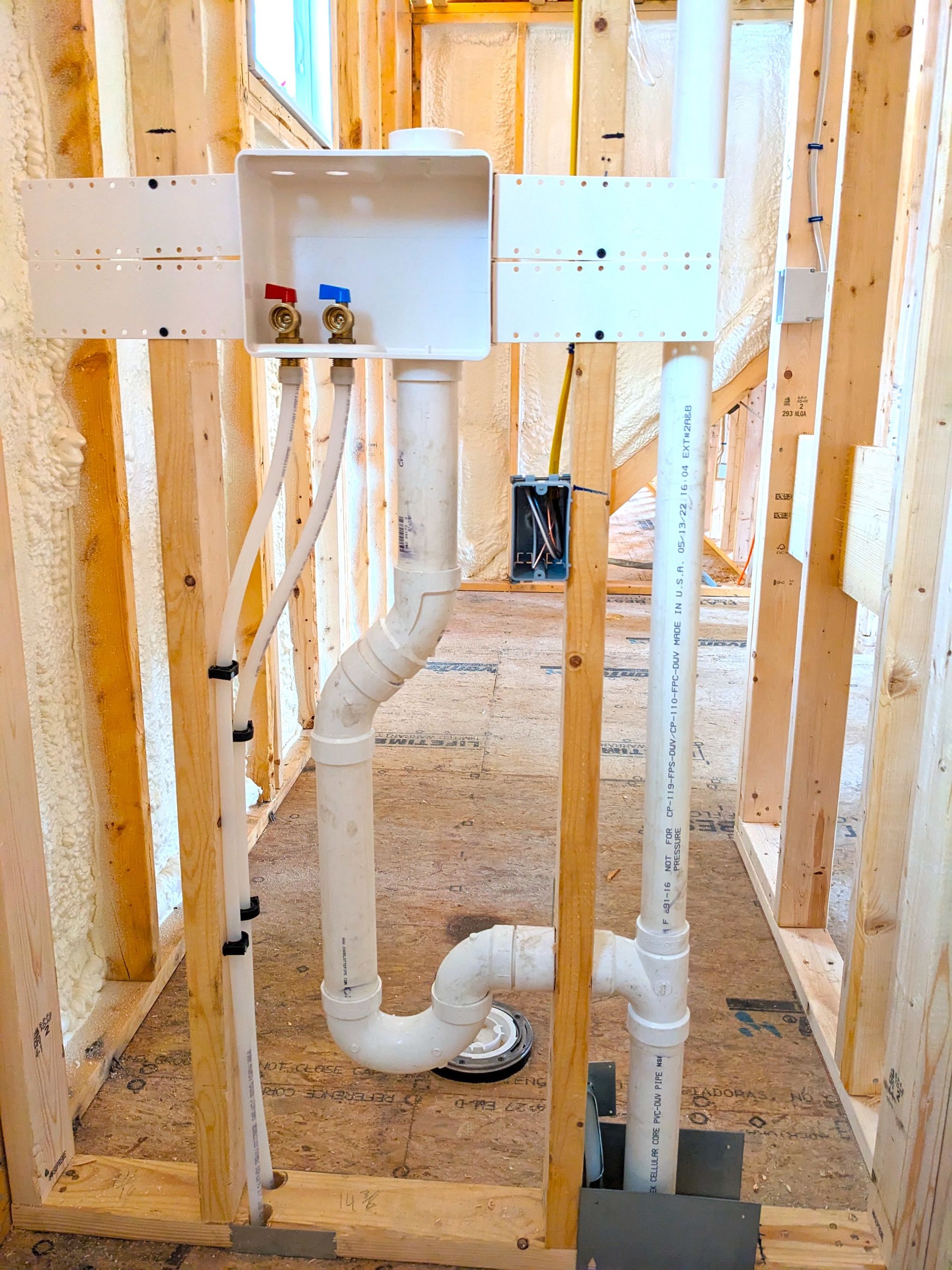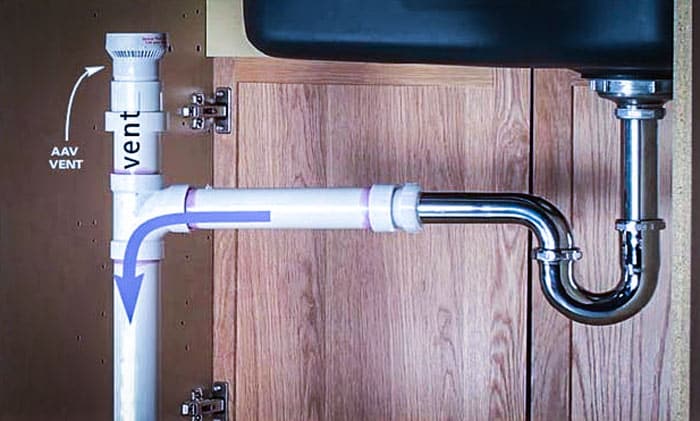The Value of Adequate Ventilation in Your Home's Plumbing Systems
The Value of Adequate Ventilation in Your Home's Plumbing Systems
Blog Article
They are making a few great annotation on the subject of Why Plumbing Air Vents Are Important in general in this content following next.

Correct air flow in pipes systems is often neglected, yet it is vital for keeping the functionality and security of your home's pipes. Air flow aids manage atmospheric pressure, stop the build-up of hazardous gases, and ensure the efficient removal of waste. In this overview, we will certainly explore the importance of proper plumbing air flow, just how it works, and the advantages it gives your pipes system.
Recognizing Air Flow in Pipes
Ventilation in pipes refers to the network of pipelines that allow air to move with the water drainage system. These vents serve multiple objectives, consisting of regulating atmospheric pressure within the pipelines, protecting against drain gases from entering the home, and aiding in the smooth circulation of wastewater.
How Air Flow Works in Pipes Equipments
Atmospheric Pressure Guideline
Appropriate ventilation maintains well balanced atmospheric pressure within the plumbing system. When water moves with pipes, it displaces air. Without ample ventilation, this displacement can develop negative pressure, causing slow drains pipes or siphoning of water from traps, which can trigger unpleasant smells to permeate into the home.
Avoiding Drain Gas Buildup
One of one of the most important functions of plumbing vents is to stop sewer gases, such as methane and hydrogen sulfide, from building up within the home. These gases can pose significant health risks and are highly flammable. Vent pipelines allow these gases to get away safely outdoors.
Aiding in Waste Elimination
Air flow assists in the effective removal of wastewater by avoiding airlocks in the drainage system. When air can flow easily via the vents, it allows water and waste to move smoothly via the pipes, lowering the risk of blockages and backups.
Types of Plumbing Vents
Main Heap Vent
The major stack vent, likewise known as the air vent stack, is the key vent in a pipes system. It prolongs from the major drain align through the roof covering, allowing gases to get away and fresh air to get in the system.
Branch Vent
Branch vents link to the major stack vent and serve private fixtures, such as sinks, commodes, and showers. These vents guarantee that each component has ample ventilation to function appropriately.
Air Admittance Shutoff (AAV).
An Air Admittance Shutoff (AAV) is a one-way valve that allows air to go into the plumbing system without the demand for a typical air vent pipeline expanding with the roof. AAVs are commonly utilized in restorations or locations where mounting a typical vent is impractical.
Indicators of Poor Air Flow in Plumbing.
Slow Draining Fixtures.
If your sinks, tubs, or commodes are draining gradually, it could be a sign of inadequate ventilation. Inadequate air circulation can produce a vacuum result, making it challenging for water to drain pipes effectively.
Gurgling Seems.
Gurgling sounds originating from drains pipes are typically a result of air being sucked with water traps as a result of unfavorable stress in the pipes. This is a clear indication of not enough air flow.
Unpleasant Odors.
Sewage system odors inside your home are a warning that your plumbing system is not effectively aerated. This might suggest that sewage system gases are not being properly vented outside, resulting in possibly dangerous conditions.
Typical Ventilation Errors.
Insufficient Vent Sizing.
Utilizing small air vent pipelines can result in bad air flow and pressure inequalities in the system. It's essential to make use of vents that meet the specific needs of your plumbing system.
Improper Vent Placement.
Positioning vents too much from the components they offer can minimize their effectiveness. Correct positioning guarantees that air can move openly and efficiently via the system.
Disregarding Code Needs.
Building codes supply specific guidelines for pipes ventilation. Ignoring these codes can cause a system that stops working to operate correctly and may bring about costly repair work or carcinogen.
Advantages of Proper Ventilation.
Improved System Effectiveness.
Correctly aerated pipes systems operate extra effectively, with less clogs, faster draining, and less strain on the pipes. This efficiency extends the life expectancy of the plumbing system.
Improved Air High Quality.
By protecting against sewage system gases from entering your home, appropriate air flow adds to far better indoor air high quality, making your living environment healthier and more comfortable.
Protecting Against Water Damage.
Ample ventilation helps stop water from being siphoned out of catches, which can lead to drain gases entering the home and causing water damages in time.
Steps to Make Sure Appropriate Ventilation.
Consulting Plumbing Codes.
Always seek advice from neighborhood pipes codes when making or changing your plumbing system. These codes provide the needed guidelines for proper venting and ensure your system satisfies safety criteria.
Routine Assessment and Maintenance.
Routine inspections can aid recognize prospective ventilation issues prior to they come to be significant issues. Maintenance tasks, such as cleaning up vent pipelines and looking for obstructions, are important for keeping the system in good working order.
Professional Installment.
For new installations or major adjustments, it's important to employ a specialist plumbing technician. They have the proficiency to make certain the air flow system is correctly designed and set up according to code.
Conclusion.
Proper ventilation is a vital part of any kind of plumbing system, making certain that it functions successfully and securely. By understanding the significance of ventilation, acknowledging the signs of bad ventilation, and taking steps to preserve your system, you can stop costly issues and shield your home's air quality.
What is a Plumbing Vent and it's used for?All plumbing systems in residential and commercials construction have a plumbing vent. It doesn’t just vent unwanted odors from the drainage system to the outside; it actually serves an important purpose by supplying air to the system.
The plumbing drainage system is actually called a drainage, waste and vent (DWV) system. When water flows down the piping, an air supply (vent) is needed to allow the water to flow. Think of the vertical pipe as a drinking straw. If you plug the top end of a straw, liquid won’t drain from it.
The DWV system in your building consists of a series of pipes connected to each fixture; they extend above each fixture, and the system terminates at an open pipe that extends through the roof. This piping allows air into the system and prevents unbalanced pressures in the piping.
?The vent also prevents the system from drawing water out of a trap at the fixture with the characteristic “glug-glug-glug” as the drain gasps for air. Plumbing traps should drain smoothly and never “glug” or gasp for air.
If you have a drain that empties slowly or gurgles as it drains, this may indicate a venting problem. If you flush a toilet and the sink gurgles, there’s definitely a vent problem. It is good idea to have a Plumber check this.
https://www.ameliashomeinspection.com/blog/what-is-a-plumbing-vent-and-its-used-for

I came across that blog posting on The Upsides of Proper Ventilation in Plumbing Design while doing a lookup on the web. In case you enjoyed our blog entry if you please remember to share it. I am grateful for being here. Don't forget to check our website back soon.
Visit Link Report this page